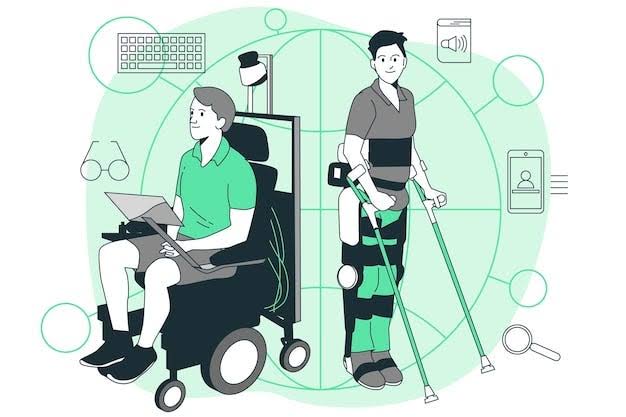Technology has changed how banks work worldwide. Traditional banking, which relied on physical branches, paper transactions, and in-person service, is now being transformed by fast technological advances.
Today, customers want convenience, speed, and personalised service. This has forced banks to change or risk becoming outdated. This technology shift affects many areas, from how customers are served to how banks operate internally.
Shift from Brick-and-Mortar to Digital Platforms
One of the most visible changes in traditional banking is the migration from physical branches to digital channels. With smartphones and internet access now ubiquitous, customers can perform most banking tasks from the comfort of their homes or while on the move.
Major trends include:
- Mobile apps replacing in-branch services for transfers, deposits, and bill payments
- 24/7 online banking services reducing dependency on business hours
- Virtual chatbots and AI-driven support replacing human customer service agents
- Closure or downsizing of physical bank branches to cut operational costs
This shift has enhanced customer convenience but also put pressure on banks to maintain cybersecurity and reliable infrastructure.
Emergence of Fintech Competition
Financial technology (Fintech) firms have emerged as powerful disruptors, offering faster, cheaper, and more innovative financial services than many traditional banks. These new players focus on user-friendly digital experiences and often specialize in niches like payments, lending, or investment platforms.
Key areas of fintech competition:
- Peer-to-peer lending platforms reducing reliance on banks for personal loans
- Robo-advisors managing investments with algorithms and automation
- Mobile wallets and payment apps such as Apple Pay and PayPal replacing debit cards
- Cryptocurrency platforms offering decentralized finance options
This competition has forced traditional banks to accelerate their digital transformation and collaborate or compete with fintech companies.
Automation and Artificial Intelligence Integration
Technology has enabled banks to adopt automation and artificial intelligence (AI) in a wide range of operations, improving both efficiency and accuracy. Routine tasks that once required manual input are now handled by machines.
Examples of automation and AI in banking:
- Fraud detection algorithms that scan for suspicious transactions in real time
- Chatbots that provide instant customer support around the clock
- Loan approval processes streamlined through AI-based risk assessment
- Document processing and KYC (Know Your Customer) checks automated for speed
These technologies save time and reduce human error, but they also require banks to retrain their workforce and rethink legacy systems.
Enhanced Cybersecurity Measures
As more banking services move online, cybersecurity becomes a major concern. Traditional banks are increasingly vulnerable to cyber threats, data breaches, and digital fraud. In response, they have had to invest heavily in securing their digital infrastructure.
Critical cybersecurity developments include:
- Implementation of biometric authentication like fingerprint or facial recognition
- Use of blockchain technology for secure and transparent transactions
- Multi-factor authentication for online and mobile banking
- Continuous monitoring systems for real-time threat detection
Without strong cybersecurity, customer trust in digital banking can quickly erode. Traditional banks must balance innovation with strong data protection.
Personalized Customer Experiences
Another major impact of technology is the ability to offer highly personalized services using data analytics. Traditional banks have access to massive amounts of customer data, and with the right tools, they can tailor products and communication to individual preferences.
Benefits of personalization include:
- Custom financial advice based on spending habits and income
- Targeted product recommendations like credit cards or savings plans
- Dynamic notifications and alerts aligned with customer behavior
- Improved customer satisfaction and loyalty due to relevance and convenience
Banks that leverage data responsibly and ethically can build deeper relationships with their clients.
Transformation of Internal Operations
Technology hasn’t only changed how banks serve customers—it has also reshaped internal operations. Digital tools help streamline complex workflows, improve compliance, and increase productivity across departments.
Notable internal changes involve:
- Cloud computing for flexible data storage and remote access
- AI tools for internal audits and regulatory reporting
- Centralized digital platforms for managing employee tasks and communication
- Virtual onboarding and training programs for new employees
These efficiencies allow banks to operate leaner, make quicker decisions, and respond rapidly to market changes.
Regulatory and Compliance Challenges
As technology evolves, so too must the regulatory frameworks that govern banking. Traditional banks must navigate a complex landscape of compliance requirements while embracing innovation. Regulators are increasingly paying attention to data privacy, algorithmic transparency, and ethical AI use.
Regulatory concerns include:
- Ensuring digital lending platforms follow fair lending rules
- Monitoring cryptocurrency adoption and related risks
- Updating laws to protect consumers in digital environments
- Preventing money laundering in fast-moving financial systems
Keeping up with these changing expectations is essential for maintaining trust and avoiding legal setbacks.
Bridging the Digital Divide
Despite the convenience of digital banking, there remains a segment of the population that struggles to adapt to these new systems. Elderly individuals, people in rural areas, and those with limited access to technology are at risk of being excluded.
To bridge the gap, traditional banks are:
- Offering hybrid services with both digital and in-person options
- Providing digital literacy programs for older customers
- Investing in rural internet banking infrastructure
- Maintaining dedicated customer service lines for non-tech-savvy users
A balanced approach ensures that the benefits of technology do not create new inequalities.
Long-Term Outlook for Traditional Banks
Looking ahead, the role of traditional banks will continue to evolve. While physical branches may become fewer, the trust and brand recognition that traditional banks have built over decades remain valuable assets. Many banks are now focusing on becoming digital-first institutions while preserving the human touch.
Future priorities include:
- Expanding partnerships with fintech startups
- Investing in sustainable and ethical technology practices
- Launching next-generation banking platforms powered by AI and blockchain
- Enhancing digital education for customers and staff alike
By embracing technology wisely and strategically, traditional banks can maintain relevance and continue to serve as pillars of financial stability in an increasingly digital world.



